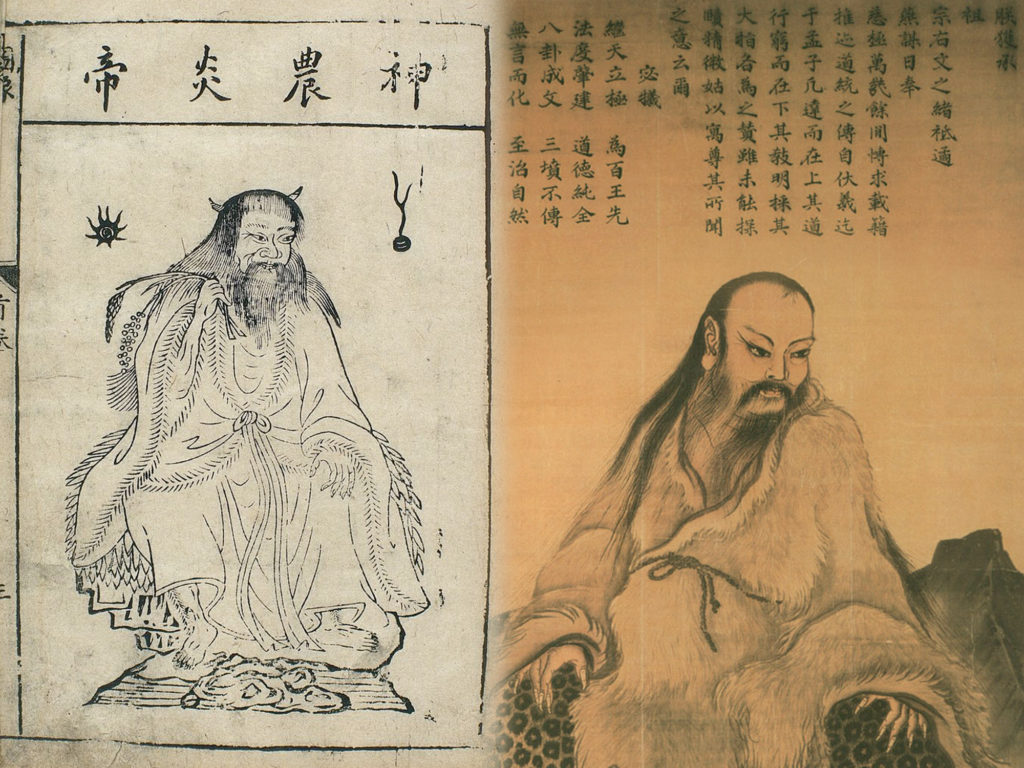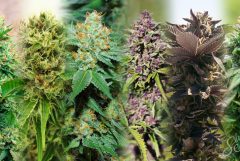Do you know how it is that humans came to fall in love with cannabis? The history of human use of cannabis starts in China, potentially 10 thousand years ago, and is still one of mankind’s favourite plants for medicine and recreation. Read this article to find out how it was used throughout history until it finally arrived in your garden.
The mysterious history of cannabis stretches over all four corners of the planet Earth, from ancient Chinese medicine to being a recreational intoxicant for the ancient Greeks. Cannabis has fundamentally planted its seed all over the world, with most cultures having an indigenous use associated with it. It is mysteriously adaptable to most climates around the world, meaning it has been available to most of humankind over the ages.
Cannabis is argued to have been one of the very first agricultural crops that human beings used, effectively being one of the driving factors for civilization. Its history is so expansive, that to examine it must logistically be in parts. Examining a history of the uses of cannabis allows for a bigger picture of its original habitat, as well as how it made its way into the economy.
From recreational use to making industrial materials, cannabis holds the title for being one of the oldest used plants in human history. This article offers a chronological exploration of the uses of cannabis throughout history to give an understanding of how weed came about into the life of the everyday person in the 21st century.
Starting at the beginning in China
To start at the very beginning is a very good place to start. Looking into the first sign of cannabis use has involved much more than just searching for it in written records. Cannabis has been used by humans long before we could write or document our use of anything.
The oldest identifiable sign of hemp use was found in a piece of pottery from a village in Taiwan, dating back to about 8,000 years BC. Identifying use of hemp for industrial purposes dating that far back means that cannabis could arguably be one of the very first agricultural crops used by humans. Carl Sagan touched on this in his book, The Dragons of Eden, Speculations on the Origin of Human Intelligence, published in 1977. He said, “It would be wryly interesting if in human history the cultivation of weed led generally to the invention of agriculture, and thereby to civilization.”
Up until 4,000 BC, all recorded uses of cannabis came from China and Turkestan, mainly being used as oils for food, and textiles made out of hemp. Then in 2,700 BC, the Emperor Shen Neng of China reported using it for the first time for recreational purposes.
Bhang in India

Weed appeared next in ancient Hindu texts coming from India. It was specifically mentioned for the first time in the sacred text Atharvaveda (Science of Charms). It is described in this text as being a plant used for sacred rituals, and it was mainly used as an offering to Shiva. In this text, cannabis (especially when it is prepared as bhang) is the Sacred Grass.
As early as 2000 BC was the first mention of cannabis use in India, although it’s likely that the history of its use dates back further. Bhang is prepared with dry cannabis leaves, seeds, and stems. They are ground into a paste and then mixed with milk, ghee, and spices for taste.
In Vedic times it was used to boost meditation and assist in achieving transcendental states. However, it also maintained an integral part of medicinal culture in the time, treating things such as fever, dysentery, sunstroke, clearing phlegm, assisting digestion and appetite, curing speech impediments (such as lisps), and for giving the body acute awareness.
Medicinal cannabis for the ancient Egyptians
The ancient Egyptians were inherently connected with use of sacred plants, especially for their rituals. Cannabis is recorded on Egyptian papyri as far back as 1300 BC and was recorded as being used for medicinal purposes. There are a number of ancient Egyptian texts that mention the use of cannabis in their rituals and medical practices, including the Eber Papyrus and the Berlin Papyrus.
The ancient Egyptians recorded in their texts that they used cannabis to relieve the pain of haemorrhoids, sore eyes, and as offerings in their rituals for the afterlife.
Cannabis arrives in Europe
There is no mention of cannabis being present in Europe until 400 BC, when it was recorded as being used for hemp cord in Russia. However, weed’s most famous appearance in Europe came with the nomadic Eurasian tribe, the Scythians.
The Scythians were a nomadic Iranian tribe, inhabiting large areas and travelling long distances across Eurasia. They were involved in ritualistic use of cannabis, believing the plant carried a sacred ancient knowledge. Although use has not been recorded in literary texts by the Scythians, artefacts have been found containing cannabis seeds as far back as 700 BC. The Scythians used cannabis seeds as offerings in royal tombs for the afterlife. Tents were discovered that were used for ancient death rituals, and outside those tents pouches were found containing cannabis seeds. This is how cannabis found its way to Northern Europe.
Around 430 BC, cannabis appeared plentifully in the texts of Herodotus, whose writings support the ritualistic use introduced by the Scythians. In this way cannabis became a ritualistic and recreational tool for the ancient Greek, and roughly 200 years later hemp rope was recorded in Greece.
Medical and Industrial cannabis take off

By 400 BC, cannabis had effectively planted its seed all over the world. It is even more likely that cannabis was being used long before there were records of it, too. By the time that weed had made it from Asia, to Africa and then to Europe, it was beginning to become a major agricultural tool for humans.
The very first record of the invention of hemp paper occurred in China in 100 BC. Not long afterwards, the Vikings took hemp rope and seeds to Ireland and began taking advantage of its industrial uses there. By 900 AD, the Arabs were learning techniques to make industrial materials out of hemp.
By the mid-1500s, King Henry was fining farmers in England if they refused to participate in hemp plantation for industrial use. Its industrial benefits were beginning to become widespread across the world, and almost all cultures were taking advantage of its medicinal and industrial properties by that time in human history. Medical cannabis use was reported by physicians of this time in France, Portugal, China, Greece, and Britain. By the mid-1700, cannabis had officially made it to the New England Medical Dispensatory.
The 19th century was a blossoming one for medical and industrial cannabis production in the USA. Plantations arose in Mississippi, Georgia, California, South Carolina, Nebraska, New York, and Kentucky. For this entire century, weed was widely known as a medicinally beneficial product across the world, and many physicians were using it for its medical benefits. It was widely available in dispensaries, and it was an accepted part of the medical culture of the world.
Weed’s spiritual reconnection
Weed played a crucial role for spirituality in its first recorded uses in humanity, and then quickly became a very profitable medical and industrial tool. By this time, most of the world was using cannabis agriculturally, manufacturing products for medical or industrial purposes. However, at around 1100 AD, cannabis made a special spiritual reappearance in human culture through the Persians and their Sufi connection.
Sufi master Sheik Haydar used the plant in Persia and, following his personal use of the plant, mystic devotees began using it as a spiritual aid. In this way weed made its way throughout the area, into Bahrain, Iran, and Syria. Not long after this, Ethiopian pipes containing cannabis were found, suggesting that weed had travelled to most of Africa.
Reefer madness and prohibition
The expansive history of cannabis medical, spiritual, and industrial uses somehow led to the beginning of prohibition in the early 1900s. It began in the USA, and the prohibition movement spread across the world. Weed became one of the most “dangerous” drugs, and government propaganda against cannabis was enormous.
However, that does not mean that the use of cannabis stopped or that it was even curtailed. Humans continued using cannabis despite prohibition, for both recreational and medicinal purposes. The benefits of using cannabis that have been exhibited through history have never been ignored by human beings, even after being told that the plant is dangerous.
The most recent cannabis history is that prohibition is on its way out. It is almost as though we will begin walking backwards through the timeline of the history of weed, to reconnect with all of its uses again. Looking back, it seems impossible that prohibition could have worked. Weed had already been used by humans for thousands of years before the concept of prohibition became real. In fact, by that time the use of cannabis had been deeply engrained into human culture, and the possibility of removing that was slim.
From as long as 10,000 years ago, cannabis has been growing inside the consciousness of human beings. It has been a part of our spiritual initiation, our medicinal advance, and as an industrial tool. It could very well have been the catalyst for human civilization to flourish into what it is today.











